How to Troll for Trout | Learning to Troll for Trout
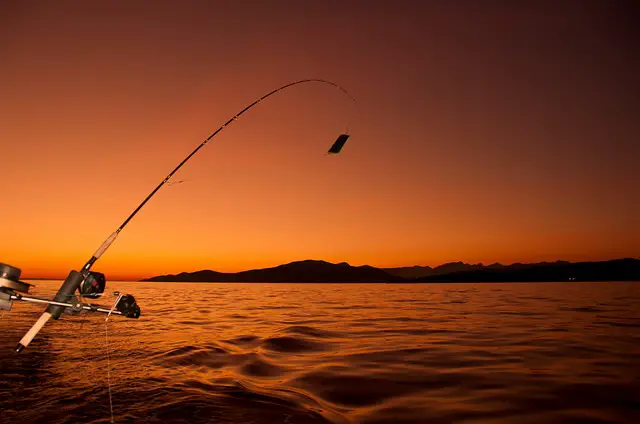
If you love trout fishing and want to extend your season through the heat of summer? If so, lakes and reservoirs are your best bet. But you will also need to change tactics. Trolling is the most effective way to find and catch big water trout and we are here to explain how.
Many anglers overlook trolling for trout. Some think it is too difficult to master. Others believe trolling is only effective for larger species such as walleye, pike, or striped bass.
Key Takeaways
Learning how to troll for trout is easier than you may think, and it is also one of the best ways to target these beautiful fish even if they’re holding in deep water!
All you need to do is:
- Find the depth the trout are holding
- Choose if you’re going to use a downrigger
- Present the correct bait
- Use the right rod for trolling
- Decide if you’re going to use a motor or drift for trolling
Whether you have trolled for other species or brand new to fishing learning how to troll for trout is worth the effort. Not only will it extend your season, letting your catch trout year-round, it is also a lot of fun! The information below will explain the different methods of trolling, what gear you will need, and which method best fits your style of fishing. All of this is done with one goal in mind – putting for trout in your creel.
Why Troll for Trout?
There are two main reasons to troll for trout. First, it allows you to fish deeper. Second, it allows you to search large areas.
As summer water temperatures rise trout move into deeper water where it is cooler. Depending on the size of the water you are fishing this means they could be 25′ or deeper. Fishing this deep with traditional trout gear is almost impossible.
Trolling rigs are specifically designed to fish deep and can easily reach these summer trout. Plus, it is easier to control the depth once fish are located.
Speaking of finding fish, this is another area where trolling is very handy. These trout will often travel in schools that are constantly moving. Blind casting in search of these schools is as much luck as skill.
Because you can work multiple lines at different depths trolling allows you to search large areas quickly. Once you locate a school it is easy to adjust your other lines to target the same depth.
Trolling for Trout with Downriggers
Trout Downrigger Basics
No matter what you are targeting it is hard to beat downriggers for trolling. They allow you to get your bait deep fast so you can spend more time fishing. Plus, they allow you to use lighter tackle. Not only does this increase your chances of detecting a bite it also adds to the challenge once the fight is on.
If this method is so effective why aren’t more anglers doing it?
The first reason is cost. Casual anglers may find the idea of investing in additional equipment prohibitive. This is especially true for those using smaller boats ill-equipped for this set.
The second reason, which is probably more common, is a lack of knowledge. If you have never used downriggers before they can be intimidating.
If you do not want to invest in extra equipment, we will offer alternative methods later. For now, let’s focus on simplifying downriggers set up and use.
Downriggers are simpler to use than you may think. They consist of a large reel of wireline, a boom to extend the line over the water, and a pulley. The wire is attached to a 4-12 lb. weight and a quick-release clip connect your fishing line to the weight.
How to use a downrigger:
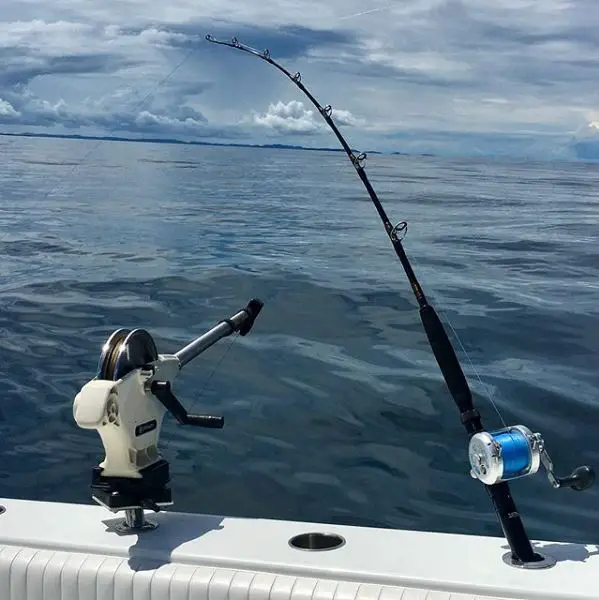
- While running at low speed let your lure out to desired distance (30-70 ft.)
- Attach your fishing line to the quick-release clip
- Place rod in nearby holder with drag released
- Lower the weight to the desired depth (15-30 ft.)
- Reel in enough line to cause a slight bend in the tip and tighten the drag
When a fish strikes the lure, the line will release from the weight and the rod will straighten. Remove rod from the holder and fight the fish the same as you would any other time. Remember, although the initial release of the line may set the hook, it never hurts to give it a quick tug to be sure.
By the way, did you know you have full access to the breakdown article on how to troll for trout, salmon, or kokanee with a downrigger? You do!
Avoid all the frustrating things that you could run into in one simple article. Click the link below.
Trolling for Trout without Downriggers
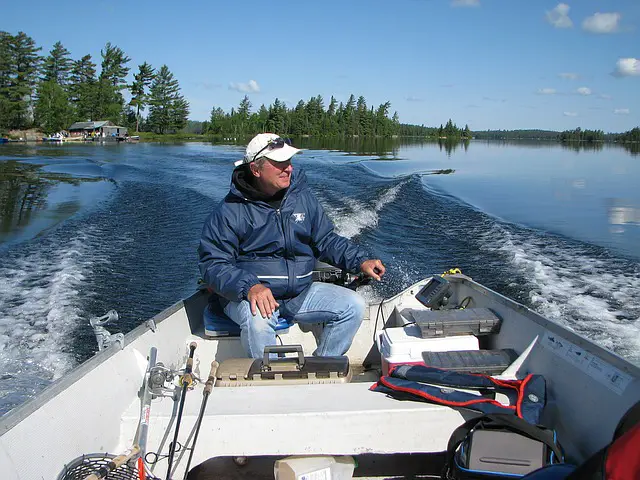
Although downriggers are the preferred method for trolling for trout there are other options. Here are three options for those who do not have downriggers but still want to experience big water trout fishing.
Flat Lining – this is the least complicated method of trolling for trout. It requires no special equipment and can be done from almost any boat, including canoes and kayaks. It is remarkably effective on smaller waters or when trout are running at shallow depths.
- Attach a diving lure such as a deep-diving crankbait, spoon, or spinner to line
- Let out 25-50 ft. of the line while moving at slow speed
- Place the rod in the holder and wait for a bite.
You can position lines at different distances and depths to search for fish.
Keep in mind this is just the tip of the iceburg when it comes to trolling for trout without a downrigger.
Did you know there is a full article that goes into much more detail about just that? Click the link below to learn more!
Planer Boards – this method is similar downriggers in that it uses a mast, reel, and secondary line to deploy the planer boards. However, there is no weight and the entire outfit is more compact making it a better choice for smaller boats. The biggest advantage is the ability to space lines further apart, covering a larger search area.
- Attach planer board to mast cable and place in the water
- Feed out cable until the board is desired distance from the boat (15-25 yds)
- Place baited hook or lure in the water with the drag set
- Attach release clip to the fishing line and cable ring and place in the water
- Feed fishing line, allowing the ring to slide out the cable until 2-3 ft. from board
When a fish strikes the clip will release allow fishing line to fall in behind the boat. If a smaller fish strikes and the clip does not release give the fishing line a slight tug.
Lead Core Line – this method is set up and fished in the same manner as flat-lining. The difference is the weighted line allows you to fish deeper. Most lines are colored in 10-yard increments and sink at a predetermined rate (i.e. 5 ft per 10 yds. section).
- Spool the appropriate amount of lead line with backing. You will need a larger
- Reel and spool to accommodate the thicker lead line.
- Attach monofilament or fluorocarbon leader and lure
- Deploy straight off back or side of the boat at varying depths & distances
- Can also be combined with planer boards for greater coverage.
The lead core line will sink without the use of additional weight. This will allow you to fish deeper and use smaller lure if desired.
Best Lures for Trolling
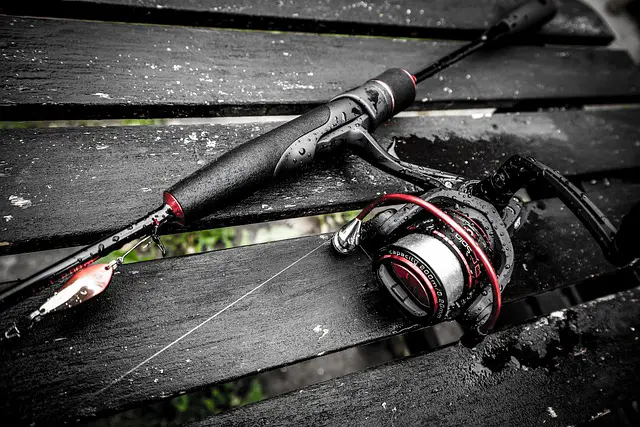
When selecting a lure for trolling action is most the most important consideration is action. You need a lure that will react properly when towed, which often involves speed greater than those of a normal retrieval. When using multiple lines select lures with similar actions for each.
The next concern is color or pattern. The goal is to match the locally available food source, selecting lures of a similar size and color as the naturally occurring baitfish.
When searching for fish it does not hurt to include at least one bright, almost annoying color just in case.
What is the best trolling rig for trout or salmon?
The best way to catch a big trout, kokanee, or salmon is to use the following setup:
Attractor: 6in Shasta Tackle UV sling blade (blue, silver in clear water, chartreuse, bright pink in stained water)
Leader: 18-24-inch leader. The more active the fish are, the shorter the leader you want. The attractor will also shake and wobble the lure as it wobbles back and forth. The longer the leader is, the less action your lure will have.
Lure option #1: Wiggle Hoochie in green, blue, pink, or a Mack’s Criplure. These baits will give you the most action.
Lure option #2: Tie on a Mack’s Peewee Hoochi +/- a Mack’s Smile Blade in front of the Hoochie, wedding ring spinner size 2, in-line spinner, or trolling spoon (like a KastMaster or a Dare Devil spoon). These baits will give you moderate action.
Lure option #3: Tie on a #2 straight shank light wire Neko rig hook (hook that bass anglers will use), then thread on a 1.5-inch Berkley Power Minnow on a size 2 light wire finesse hook behind your sling blade +/- a Macks Smile blade in front of the Hoochi. This bait will give you the least action, which can be great when fishing after a previous cold front, fishing in calm conditions, or if you’re fishing in very clear water!
What to do if you’re not getting bites: (1) small piece of cured anchovy or cured shad to the hook and cover with bait scent. (2) change the lure color based on the water clarity. (3) If water clarity is the same, then change to a lure with either more action (wiggle hoochie) or less action (Berkley Power Minnow on a 24-inch leader). (4) go to a different spot
You’ll have the best results if you troll 1.5-2.0 miles per hour.
Many times trout or salmon will just follow the lure being trolled, sometimes up to 5-10 minutes and not strike! So to create a reaction strike, you want to either speed up or slow down your troll every few minutes. Another good way to get a reaction strike is to make a sharp turn of the boat.
Here is a guide to lure selection based on the season:
Spring – early season trout are closer to the surface and prefer highly active lures.
Rapalas – (2″ – 3 ½”), spoons (#1, #0), and spinner (#3,#4) are the top choices. Adding a flash of bright color works well this time of year.
Summer – as temperatures rise the trout are deeper and conserving energy. Wedding ring lures, large spoons, and needlefish lures in gold or silver resemble large tempting meals. When trolled at a slower speed they imitate an easy meal.
Fall – trout will start aggressively feeding as they prepare for lean winter months. They will also move closer to the surface with the cooling temperatures. Use this to your advantage by selecting large Rapalas or plugs in natural patterns.
If nothing else is working switch to curly-tailed grubs in various colors. This will often turn on otherwise lazy fish.
Common items you’ll need for trolling trout...
#ad / Images from Amazon Product Advertising API
Trolling with Flies for Trout
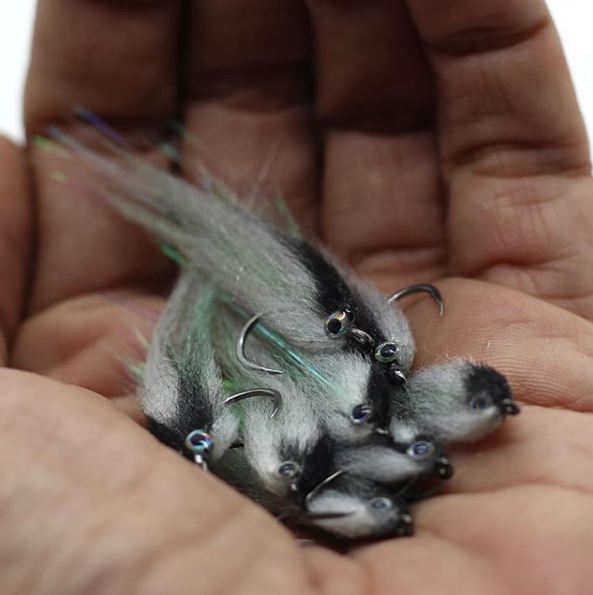
trout fly streamers – photo cred @nachoheredero_crrflies
Although it is not as popular as other methods, trolling for trout with flies can be very productive. After all, many flies are designed to imitate exactly what trout are forging on and do so in amazing detail.
How to use flies when trolling:
- Select a pattern that matches natural forage. Smaller trout (less than 16″) prefer insects, larvae, and smaller invertebrates. Larger trout prefer minnows, crustaceans, and leaches.
- Some patterns are easier to troll and produce a more enticing action. Steamers, Clouser minnows, wooly buggers, and sparkle minnows are a few excellent chooses.
- Flies can be used with any method of trolling; however, you may need to add weight to assist in gaining desired depth.
- If using a fly rod for trolling select an intermediate or full sink line and a 9-12-foot leader.
Best Gear for Trolling
The specific set up needed when trolling for trout will vary depending on the method used and size of trout you expect to encounter. For example, downriggers will allow you to use lighter tackle while the lead core line will require a large reel & spool.
A general all-around trolling set up form trout will include:
- 6 1/2 – 8 ft. Medium power rod with moderate to fast action.
- Medium power spinning or baitcasting reel. Baitcasting is preferred for the lead core line.
- A matching line between 6- 20 lb. test. Slightly heavier line is needed due to the added strain of trolling. 6 to 8 lb. test will work for the average trout. Larger line is only needed when targeting lake trout or trophy (18″ +) sizes of other species.
- A line counter if available
- Fish finder if available
Multiple rods are preferred as it allows you to fish more than one line at a time, covering more area. Having extra rods available allows you to switch lures quickly for different depths when fish are located.
How Fast to Troll for Trout
This is a matter of great debate among anglers. Many experts recommend 1.5 to 2.5 mph when trolling. Others argue that while this works well for walleye or other predator species it is too fast for trout.
In general, trout will spend the least amount of energy necessary to catch their next meal. This is especially true with water is warmer. This means you need to keep your bait or lure in the strike zone longer.
When trolling for trout you may need to run slower, possibly as low as 5 mph. Much of this will depend on water conditions, wind, and what lure(s) you are using. Vary your speed until you identify the best speed for that day’s conditions.
Keep in mind that each type of lure will perform best at a specific speed range. When running multiple lines try to use lures of a similar design to allow peak performance at the same speed.
Using a Drift Sock or Drift Bag for Trolling
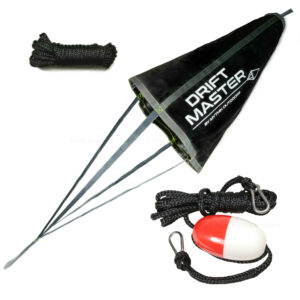 If you find it difficult to slow your larger motor enough to catch finicky summer trout the answer may be a drift sock or bag. Although more common among anglers casting large flats, they can be the ticket when slow trolling for trout as well.
If you find it difficult to slow your larger motor enough to catch finicky summer trout the answer may be a drift sock or bag. Although more common among anglers casting large flats, they can be the ticket when slow trolling for trout as well.
A drift sock is basically an underwater parachute for your boat or kayak. When deployed, it will significantly slow down your boat’s drift to a crawl, keeping your lure in the strike zone longer.
Best of all a drift sock has no moving parts and is completely silent, giving you a stealthy upper hand when trolling trout that are easily spooked.
Most drift socks share a similar design with the main difference being construction materials.
Cheap drift socks are lighter duty and constructed from paper-thin nylon with cheap straps. While others will be constructed from heavier vinyl with web straps for increased. The latter is preferred when used for trolling.
This is the drift sock we recommend – Drift Master Drift Sock.
When used to slow your boat while trolling you have two options for deployment- a single bag from the stern or dual bags from each side. The dual bag system provided more flexibility when deploying lines and helps avoid tangles.
- Select appropriate size bags for your boat
- Attach one line to forward most cleat
- Attach the second line to cleat even with or forward of the rod holder
- Repeat with the second bag on the other side of the boat
What Type of Motor Would I Need for My Boat?
Because you are traveling at slow speeds almost any type of motor is suitable when trolling for trout. Small gasoline, 2-5 hp, or the electric motor will provide plenty of power. You have a greater chance of being overpowered than having a motor that is too small.
Many anglers outfit their boat with two motors – a larger gasoline motor for running and smaller gasoline or electric trolling motor. If you will only be using one motor, make sure it is small enough to troll at low speeds while still being capable of powering you boat safely.
Placement of the motor depends on the type of boat used and which trolling set up is preferred. Outriggers work well with either bow or stern-mounted motor. When flat lining at short distances a bow mount is useful.
If you do not have the option of using a bow mount trolling motor adjust your set up accordingly.
- Keep lines further back from the boat to avoid propeller.
- Use elevated rod holders to avoid propeller wash
- Use outriggers to spend lines further apart
Trolling for Trout in Still Water
The biggest challenge you face when fishing still water is locating the fish. Because there is no current many of the trout hides stream anglers are accustomed to (i.e. riffles, eddies, etc.) do not exist. You need to look at structure and temperature instead.
Look for drop-offs, ledges, deeper depressions, or similar natural hides. These are perfect areas for trout to hid and ambush passing prey.
As the temperature increases, the trout will move deeper. The ideal temperature for most trout species ranges from 55 to 65 degrees. Although they can survive in warmer water their activity level decreases and they become harder to target.
Once you have narrowed your search area focus on available food. The areas with the most abundant food, whether baitfish or insects, will produce more trout. A good indicator of baitfish activity are birds diving to catch baitfish.
Bonus Tip
Where to Find Trout During Each Season- as was stated earlier, trout will move depending on the season. One of the biggest reasons for this is water temperature so it is not hard to predict where they will be during a given period.
Spring – cool water will allow trout to be in shallow, nearshore areas. As the trout move about the lake, they will most likely be found in the top of the water column.
Summer – trout will seek cooler water, moving away from shore and into deeper water. Depending on the species this will be anywhere between 20 – 35 ft.
Fall– cooling temperatures will draw trout back to shallower areas or higher in the water column. They will naturally try to migrate to spawn so focus on the areas near the mouth of rivers or streams.
Winter – initial drops in temperature cause trout to scatter. There is simply so much water that is comfortable they are no longer confined. Once temperatures stabilize, they follow the bait with most in the 10 – 15 ft. depth.
Other Trout Trolling Related Articles
- How To Troll for Trout [A Beginner’s Guide]
- 10 of the Best Trolling for Rainbow Trout Techniques [Tips Without Downriggers]
- Trolling for Trout with Downriggers (Best Practices & More – Secrets From A Retired Fishing Guide)
- How To Troll Flies For Trout [Our 15 Best Tips]
- What’s The Difference Between Rainbow Trout Vs Steelhead?
FAQ
Can you troll for trout from a kayak or canoe?
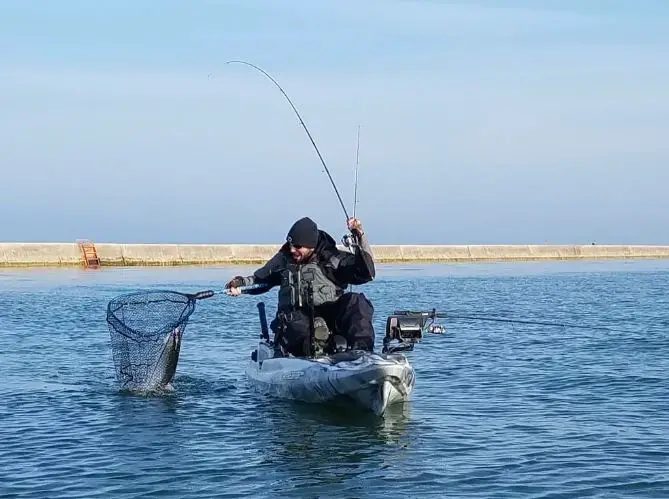
Yes, although success will depend on water conditions and to some degree your set up. In most cases peddle kayaks are better suited as they make it easier to manage lines. Flatlining is also the easiest set up when trolling from a kayak or canoe,
Can you troll for stocked trout?
Yes. Despite beliefs to the contrary stocked trout take on the behaviors of native trout after being in local waters for an extended period. Like native trout, they will attempt to move to cooler water and can be targeted by trolling.
Can you use bait when trolling for trout?
Bait is always the best option regardless of what type of fishing you do. In a best-case scenario, live bait taken from local waters is best. If live bait is not available fresh dead bait is an option. Of course, there are other baits such as worms, grubs, etc. that are popular as well.
Can you troll for trout in the rain?
Yes, although you may need to change your tactics slightly. The added commotion at the surface may require you to fish deeper and/or increase speed.
Does adding fish attractant work?
This is open to debate. There are plenty of anglers who swear by attractants. Others claim it makes no difference. Give it a try and see what happens where you fish. I have never heard of it hurting.
What’s the difference between rainbow trout vs steelhead?
Well essentially they are the same fish. The thing that makes them different is their lifestyle and where they spend most of their time.
Read more: Rainbow Trout Vs Steelhead. What’s The Difference
George Servinson
My name is George and I'm been fishing my entire life and love all things outdoors. My passion is helping anyone catch more fish. The newest things I've been doing lately is learning how to break down and clean all my reels, teaching my boy how to kayak fish, and bushcraft wilderness survival.
























